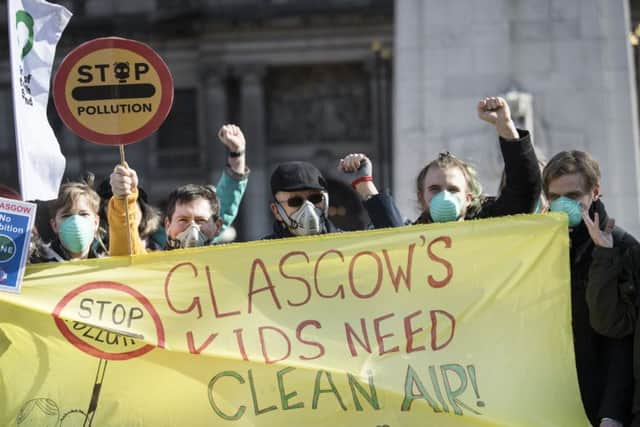Manish Jethwa: Glasgow can be the UK's landmark low-emission city
Glasgow plans to have Scotland’s first LEZ in place by the end of this year and it will eventually result in all but the cleanest-engine vehicles being banned from the city centre. That is one key way in which the city could work towards its key goal of lowering emissions, but what else can the authorities do to achieve not just this core aim but also the wider goal of reducing air pollution?
New technology that connects a range of different infrastructure together potentially has a big role to play. The latest advances in ‘Internet of Things’ (IoT) technology allow cities to connect to street lights, buildings, bridges, drainage systems and other infrastructure to monitor and analyse how they interact. This can form the foundation for local authorities’ development of smart cities or regions with reducing emissions an important part of this.


Advertisement
Hide AdAdvertisement
Hide AdLocal authorities across Scotland already have networks of automatic monitoring stations in place to capture relevant data from various points and assess air quality. Sensors can be installed on street lights above the reach of vandals but at a level low enough to measure the air people are breathing.
The data collected allows councils to monitor pollution levels and then adjust their strategy around road building, transport planning and pedestrianisation, for example, both to keep emissions to a minimum and reduce the impact they have on the wider public. Power and communication can be delivered through the street infrastructure and the wider smart city network. Linked to this, cities could also look to further cut emissions by reducing the number of traffic hotspots in the areas under their control. That’s essentially about pinpointing where traffic is heaviest. The UK is currently a very congested nation. Back in 2016, analytics company Inrix monitored traffic on every road in 123 cities, including London, Glasgow, Rome and Madrid. Its analysis revealed more than 20,300 so-called “traffic hotspots” in UK cities – well over double the number in Germany and twice that of France.
Knowing where the main points of congestion are is half the battle. Armed with that knowledge, councils can start to mitigate the problem by introducing new approaches to traffic signalling, for example, or by enhancing communication with other road users through better signposting. Dynamic traffic forecasting is another fast-emerging technology that these Scottish cities could potentially make use of. The approach connects infrastructure assets and devices to improve mobility across cities, thereby helping to reduce the time vehicles are on the road and, by extension, minimise emissions. Sensors at parking spots could collect real-time data on parking availability and be transmitted across networks, linking with end-user and local authority devices. Traffic control cameras could be connected to the transport authority in real time, enabling them to potentially increase the frequency and duration of green lights depending on road conditions.
It’s yet another example of how the smartest Scottish cities can successfully implement low-emission zones and keep pollution levels to a minimum over the coming years by adopting the latest technology solutions to monitor and measure the current situation – and then take action.
Manish Jethwa is chief technology officer at Yotta